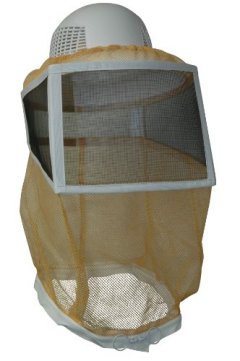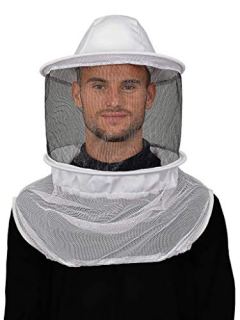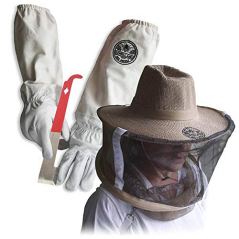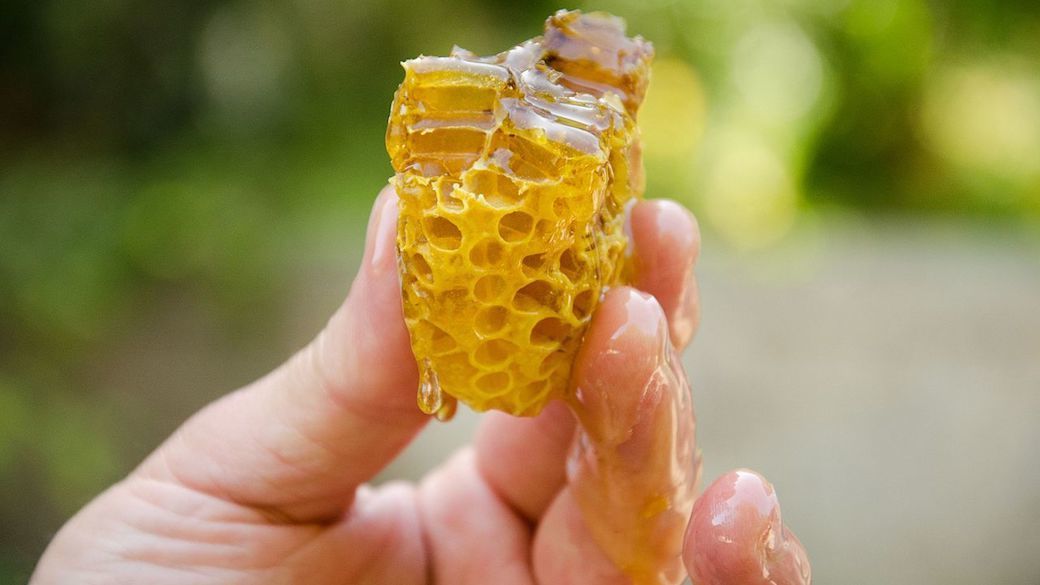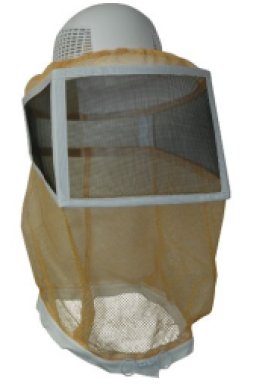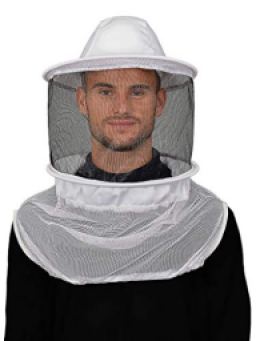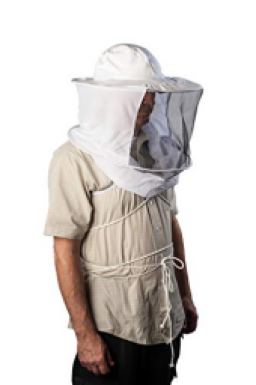Buying guide for best beekeepers’ face protection
You’ve got your hive and smoker, and you’ve ordered your bees. You’ve found a beekeeping suit that fits perfectly, as well as the gloves and boots. Now all you need is protection for your head and face.
Head and face protection may be the most essential element of a beekeeper’s protective gear, especially for the beginning apiarist. Beestings are not fun – and they can be dangerous for people who are allergic to bee venom – but a sting on the lip, eyelid, or ear would be exceptionally painful. If you’re going to have bees, it’s important to wear the proper gear that will keep you from getting stung, and the right face protection can do just that.
For such a simple idea, you wouldn’t think there would be so many choices available. But there are several different options when it comes to face protection and a number of factors to keep in mind as you shop.
Types of beekeepers’ face protection
A beekeeper’s veil, or bee mask, consists of a mesh panel that is either attached to a hat, worn over a hat, or self-supporting and is long enough to protect the face and neck. The breathable mesh enables you to see as you work with your hive and is sturdy enough to keep bees from stinging you. Very experienced apiarists may just wear a hat and veil with regular clothing, or no head protection at all, but it is highly recommended that others, particularly beginners, wear the right clothing when tending to bees.
1. Head covering
This can be a plastic, metal, or mesh helmet or hat or a self-supporting veil. It protects your scalp from beestings, provides support for the veil, keeps the veil away from your face, and, depending on the brim, may offer shade for the face. A ventilated hat or helmet helps keep you cool, too.
2. Veil
There are three common types of beekeeping veils: round, fencing, and square.
Round veil: This traditional style of beekeeping veil (also called a sombrero veil) hangs from the brim of a round hat. Some are worn draped over a pith helmet, while others are one-piece veils that come attached to a hat’s brim.
An Alexander veil is a variation of the round veil that requires no helmet. Instead, it has a cloth top (when worn it looks like a brimless pith helmet). An elastic headband keeps the fabric from touching the top of the head (to prevent stings through the cloth), and the veil is secured to the body with long drawstrings.
Pros
-
Advocates of the round veil say it keeps bees farther from the face than other veils.
-
It provides good ventilation all the way around your head and neck.
-
A round veil offers better peripheral vision than some other types of veils.
` Cons
-
Some beekeepers say the extra screen behind the head is unnecessary and just provides more places where the veil could tear.
-
Round veils don’t pack or store as easily as other types.
-
One-size-fits-all round veils can sit too low on smaller heads and obstruct vision.
Fencing veil: This veil (also called a collapsible, accordion, self-supporting, or European veil) looks something like the steel mesh masks that fencers wear, hence the name.
Pros
-
You don’t need to wear a hat with this veil because it is supported by stiff, reinforced arches.
-
Because there is little contact between the head and the hood, it won’t muss the hair the way a hat can.
-
A jacket attached to a fencing veil folds up into the veil for easy storage.
Cons
-
Some feel the mesh is too fine to be able to see through well.
-
The hood doesn’t have a brim, so sunlight can be absorbed by black mesh and impair vision.
-
Devotees of round or square veils say the fencing veil doesn’t provide the same peripheral vision.
Square veil: This veil fits over a pith helmet and uses elastic for a tight fit around the top of the brim. It has straight-edged polyester and wire mesh panels edged with fabric in front and on either side of the face, and it closes at the bottom with a drawstring.
Pros
-
A square veil keeps bees well away from your skin.
-
Like the round veil, this style offers good peripheral vision and ventilation.
-
Because of the square edges, you can fold this veil flat for travel or storage.
Cons
Features to consider for beekeepers’ face protection
Mesh
You’ll find veils made of various materials, including fiberglass, cotton, cotton/synthetic blends, nylon, and metal. You want the mesh’s grid to be small enough to prevent stings but large enough to see through clearly and provide good ventilation. Metal mesh is sturdy, and the grid is larger than that of other materials, providing good visual clarity. On the downside, you can’t fold up a metal veil because you’ll bend the wire.
Securing the veil
Your beekeeping veil won’t work without a system for keeping the bottom edge closed so bees can’t get in. There are a few different mechanisms for securing the veil.
Some veils have a zipper on the bottom edge that secures to a zipper on the bee suit or jacket. Some also have a flap of fabric that closes with Velcro over the zipper to make it even more secure. Zippers can be made of plastic or metal.
Some veils that fit over helmets or hats have two long drawstrings that hang down either in front or back. You secure the veil by wrapping these drawstrings around your body and tying them in front. There are many online videos that demonstrate how to tie the drawstrings.
There are also veils that are secured by elastic straps, which fit under the arms, or snaps, which fasten to a bee suit or jacket.
Comfort
You want to choose a veil that is effective but also comfortable. Some offer better ventilation than others – an important factor on a warm day or in a hot climate. Some veils offer better visibility than others, whether that means improved peripheral vision or no glare from sunlight hitting the mesh. Some keep the bees farther from your skin, which is a key consideration if your bees are aggressive or angry. You might have to try on a few different hat/veil combinations before you find the one that best suits you and your hive.
Care
Being able to detach the hat and veil from your bee suit or jacket makes washing easier. Some beekeeping suits can be machine-washed, but most veils must be hand-washed and air-dried.
Price
You can find veils advertised as “beekeeping” veils for a dollar or two, but these are invariably thin and flimsy and better suited to mosquito protection than a barrier against angry bees. Pay a bit more and buy the right equipment. You can find a good-quality bee veil, including the hat, for about $20, with higher-quality veils costing up to $50. There’s no need to pay more than that for a veil – you can buy a bee suit or jacket complete with a veil for $50 and up.
Did you know?
The UC Davis Honey and Pollination Center teaches classes on how to make mead, a beverage made from fermented honey.
STAFF
BestReviews
Tips
-
Wear the right gear. If you’re serious about beekeeping, wear good-quality protective gear that is intended for apiarists. An inexpensive mosquito veil is too thin and loose to protect your face from aggressive bees.
-
Check the fit. Any veil you purchase will only work if it fits you correctly and snugly. Before you wear it around bees, make sure you know how to fasten the veil’s ties, elastic, or zippers securely. The last thing you want is an angry bee inside your veil.
-
Make your own veil. You can make your own beekeeping hat and veil by using a stiff-brimmed hat (like a cowboy hat or straw hat) and a yard or so of fairly rigid clear or white wire mesh, nylon mesh, netting, or tulle – enough to reach around the hat brim and extend about half a foot below your shoulders.
- Start slowly. It’s good to have a healthy respect for your bees, but unless you’re highly allergic to bee venom, there’s no reason to fear them. As you learn how to approach and act around your bees – slowly and gently – your confidence will grow. Perhaps someday you won’t even need to wear a bee suit around your industrious little workers!
FAQ
Q. Which type of veil is best: round, fencing, or square?
A. Every beekeeper has a preference when it comes to veils. “Better” is only determined by your level of experience, your needs, the climate you’re working in, and how docile your bees are. The veil that is comfortable, keeps bees away from your face, and provides a good field of vision is the right veil for you.
Q. Does a veil come with a hat?
A. Some veils come attached to the brim of a hat. Other veils are designed to fit over a hat or helmet. Some veils are the hat. Product images can be misleading. Double-check whether the veil you want comes with a hat, or you might have to buy one separately.
Q. What type of veil fastener is best: zipper, drawstrings, or elastic?
A. As with veil type, there is no best when it comes to fastening. It all depends on your preferences and situation. Some people prefer the security of a zipper, but you have to have a bee suit or jacket that your particular veil zips to – every veil with a zipper won’t fit every suit or jacket designed to take a zippered veil.
Other beekeepers prefer veils with drawstrings because you can use the veil with any jacket or shirt and not just a dedicated bee suit. Plus, they’re easy to put on and remove. Elastic is also easy to put on and remove, but the elastic could wear out eventually, leaving gaps that bees could enter.


